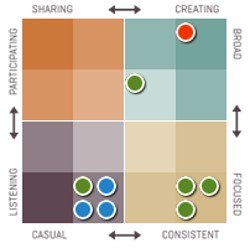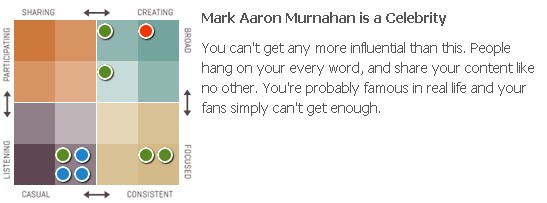
Fisker Automotive is a startup automobile manufacturer based in Irvine, California that holds some pretty valuable cards in the future of “green” car technology. Like any startup, how they play those cards will close the gap on their potential to become a Ford or a Flop. First, I want to tell you how amazing the product is, and then I will share some reasons you may or may not see this 100 MPG powerhouse in a driveway near you. I will also offer some solutions. This should be a lesson to any company.
Fisker has developed an extended range electric hybrid car that I would describe as being so sexy it makes me want to take my shirt off and rub the Karma all over my body. I do not apologize if that gives you an awkward visual, because their Fisker Karma holds many of the same elements which car lovers, like myself, look for in a proper mate. It has amazing curves, it is strong at over 400 horsepower and astonishing torque, plus it looks fast standing still. I suspect that it even smells like a new car, and we all know how sexy that is, right?

The Karma shares signature design elements with distant cousins Aston Martin DB9 and BMW Z8 Roadster; cars which were also designed by CEO, Henrik Fisker. Fisker may be an unfamiliar name to you, but he has a pedigree in automotive design, and has made some bold statements since his liberating personal venture into Fisker Coachbuild.
An added attraction which bolsters Fisker Karma’s market potential is that it treads lightly on our planet. In common short distance day-to-day use, the Karma is a plug-in electric car. Any true car-lover knows that electric cars have full-tilt torque-on-demand to plant you firmly into the seat in an instant. The torque, which is what makes car enthusiasts’ heart race, is mind-blowing. Don’t fret if the batteries fade, because it will automatically kick into gasoline-augmented “Sport” mode with enough power to whack your skull back into the headrest far better than your average hot rod. Bonus points come to play while the Fisker Karma can do this and still achieve 100 miles per gallon, and 300 miles between energy stops.
Fisker is Easy to Hate
The automotive industry is an easy target which many people love to hate. We love the freedom our cars give us, while we hate things like breakdowns, smog, and car makers who get bailed out while other economy-drivers eat beans and try to keep their companies afloat. Anybody who ever met a stereotypical car salesman has likely forged a few dire opinions about the automotive industry.
Source: Wikipedia
Some companies are easier to beat up than others. It is often not because they are doing something wrong, but because they are not projecting enough that is right. With too little positive representation, a negative portrayal is much easier for critics to propagate. In the case of Fisker Karma, the automotive rumor shylocks have come to collect their pound of flesh.
Fisker Automotive has received a significant share of negative public attention for a company able to produce over $300 million in private capital followed by a U.S. Department of Energy loan for an additional $528.7 million (REF: US DOE Announcement).
Matters such as production delays, pricing increases, and gouges aimed at corporate officers are readily available, and even prevalent in their online media mix. I am not sure I would call it overly punishing just yet, but I consider it enough that people with the high stakes of founders Henrik Fisker and Bernhard Koehler, are wise to carefully monitor and attempt to adjust the brand image. I would also consider it punishing enough to speculate that large investors in founding partner Quantum Technologies (NASDAQ “QTWW”) have cause for any spoken and unspoken concerns.
It is not uncommon for a startup automobile manufacturer to have critics, but it is disappointing that the company does not appear as a significant participant in their publicity, positive or negative, thus far.
Thinking Points for Fisker Automotive Executives
I would like to offer a short list of solutions for the company. I also want to point out that these can be modified and applied to most other companies, as well.
- Monitor: Monitor the Fisker Automotive brand. Act upon the horrid speculation and testimonies of others, using consumer-centric answers, instead of continued passive acceptance.
- Qualify: Qualify benefits of issues such as price increases and production delays. There are clearly defined reasons, and they are not all embarrassing ones. The embarrassing reasons are the speculative excuses which people make up about Fisker.
- Create: Create a respectable blog, for the sake of all things logical and measurable. Have a hub for the Fisker Automotive brand’s voice.
- Strategize: Use Fisker’s massive technology, financial, and human assets to forge a strategy. “Sell more cars” or “Increase industry alliances abroad” are not strategies. Those are goals and tactics, but competing with Tesla’s Master Plan will require strategy.
- Participate: Notice and participate in positive publicity. I have read a lot of good news about Fisker, too. In fact, I recently submitted a story to Digg.com about Fisker’s agreement with China Grand Automotive Group and watched over 40 Digg votes stack up within just a couple hours. In each of the news stories and online conversations I have read, I never witness any company participation to answer questions, but I have often seen the comments turn sour. In several cases, there is a correlation between that lack of participation and the souring of opinions.
- Delegate: Be diligent in reviewing my qualifications and my drive to assist the company. My résumé is only a click away, and likely a great investment for Fisker Automotive.
I hope to see Fisker do well, and I am pulling for them. In fact, there is only a small list of companies flying this low on my RADAR for which I initiate prompts to review my résumé. Fisker Automotive is a company that I find a strong desire to work with, because I see their enormous potential, as well as their missing pieces.
The first step is to find out if Fisker is listening, and if so, whether they recognize a need to address their current and upcoming challenges of public opinions and brand marketing.
Podcast: Play in new window | Download




